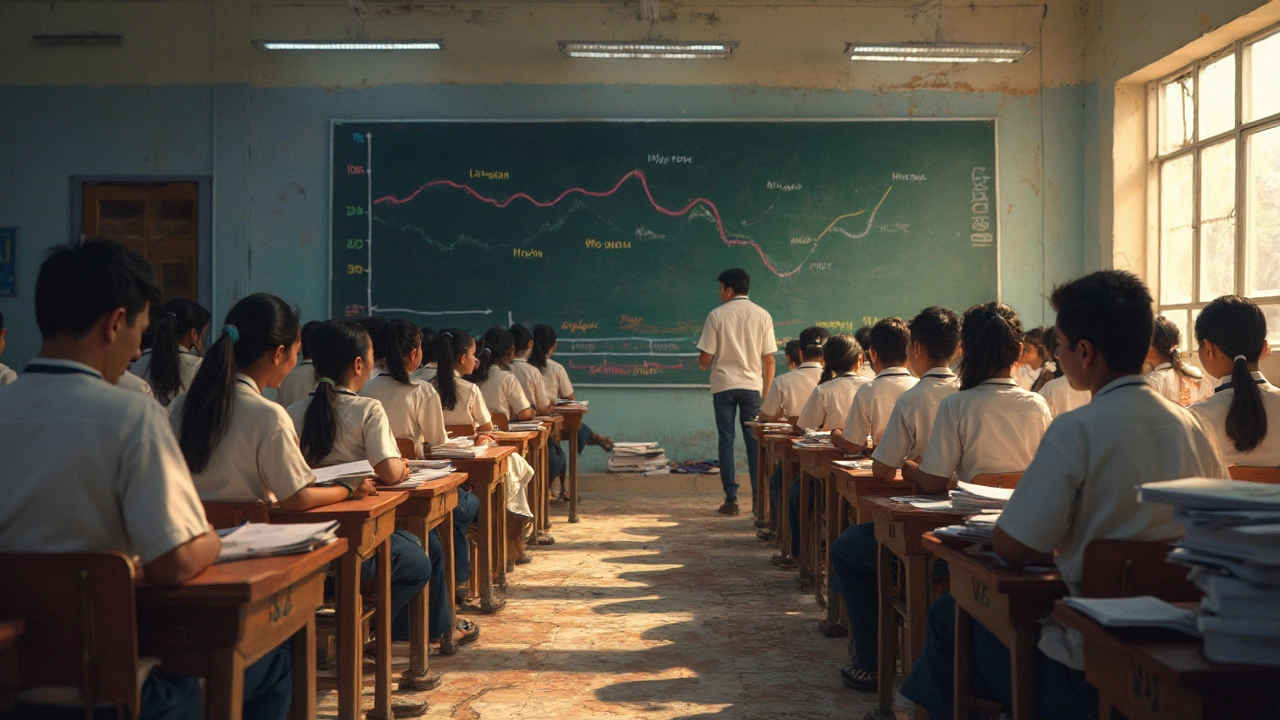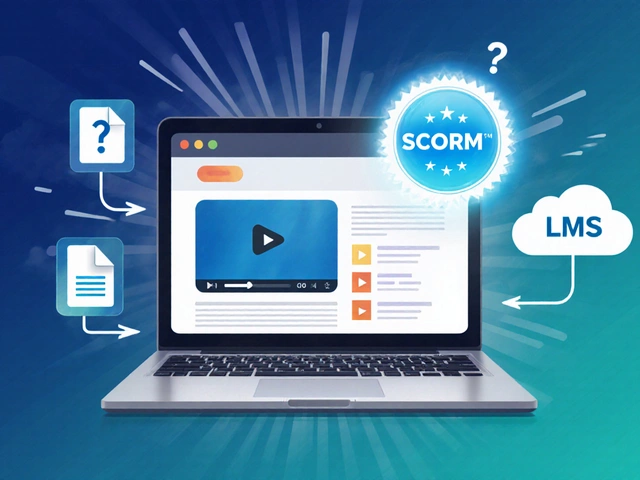
If you talk to any JEE aspirant, you'll hear wild stories about which IIT cooked up the easiest Advanced paper. Some swear by 2016, others argue for 2011, but the reality is way less dramatic than the rumors. The exam isn't set by a single person or even one IIT professor having a good or bad day. It rotates among the IITs every year, and each institute does its best to keep things unpredictable. So, if you're trying to spot an 'easier' paper pattern, you're in for a surprise—there’s a method to what might look like madness.
But yes, over the last decade, a few JEE Advanced papers have stood out for being more straightforward. Students who took the 'easier' ones often say it felt like a regular school exam—though, let's be honest, nothing about JEE Advanced is totally 'easy.' We'll break down which IITs set these legendary papers and what really went down. If you’re banking on an easy set, hold that thought—because scores, cutoffs, and toppers’ ranks can get wild no matter who’s in charge.
- JEE Advanced: Who Sets the Paper, and How Do They Rotate?
- The Easiest JEE Advanced Years: Actual Cases
- What Made a Paper 'Easy'? Real Student Voices
- Does Easy Always Mean High Scores?
- Smart Prep: Why Chasing 'Easy' Is Risky
JEE Advanced: Who Sets the Paper, and How Do They Rotate?
So here’s the thing: there isn’t one secret mastermind making the JEE Advanced paper. The job of setting the paper actually rotates every year between the major Indian Institutes of Technology—that’s why you’ll hear people ask, “Which IIT set it this year?”
The rotation cycle includes the older IITs, like IIT Bombay, IIT Delhi, IIT Kanpur, IIT Madras, IIT Kharagpur, IIT Roorkee, and IIT Guwahati. Each year, one of these takes the lead role as the organizing institute. For example, in recent years:
- IIT Madras handled JEE Advanced in 2024
- IIT Guwahati had it in 2023
- IIT Bombay was in charge for 2022
- IIT Kharagpur ran things in 2021
- IIT Delhi led the show in 2020
Each organizing IIT forms committees with seasoned professors from their own faculty and sometimes includes experts from other IITs too. These folks are the ones designing, reviewing, and double-checking every question. The goal? Make it both fair and unpredictable. They’re not recycling questions—each set is fresh, with the aim to test deep conceptual knowledge.
There's also a pretty strict protocol for secrecy. The paper-setting team works confidentially, with zero leaks. Even the location where questions are finalized is usually off-limits to everyone else, just to keep things tight.
Here’s a quick table to show the rotation in the last few years, which makes it easy to track who set which JEE Advanced:
| Year | Organizing IIT |
|---|---|
| 2024 | IIT Madras |
| 2023 | IIT Guwahati |
| 2022 | IIT Bombay |
| 2021 | IIT Kharagpur |
| 2020 | IIT Delhi |
The takeaway? There’s no single IIT that always makes “easier” papers. The system is built for fairness and unpredictability. So, targeting your prep based on the current organizing IIT is a gamble that doesn’t really pay off. The best thing to do: be ready for surprises, no matter which IIT has the pen.
The Easiest JEE Advanced Years: Actual Cases
Let’s get straight to the question everyone wants answered: which years did IIT set a JEE Advanced paper that was actually considered “easy”? Looking back, the year 2016, when IIT Guwahati took the charge, stands out in almost every discussion. Students walked out of exam centers saying the paper felt more direct, with fewer tricky or confusing questions, especially compared to 2015, which was set by IIT Bombay and was known for some tough problems.
Another year that’s often mentioned is 2011, handled by IIT Kanpur. Many aspirants felt that both Physics and Chemistry papers were manageable, with questions focusing on fundamentals rather than time-consuming calculations or lengthy logic-building. The result? A rise in top scores and a bump in the overall cut-off.
| Year | Paper Setter (IIT) | Student Feedback | Cut-off Increase |
|---|---|---|---|
| 2011 | IIT Kanpur | More direct questions, less calculation-heavy | Yes |
| 2016 | IIT Guwahati | Straightforward, few surprise questions | Yes |
But it wasn’t just about the year—the subject mix mattered. In 2012, for example, IIT Delhi designed a paper where Chemistry felt refreshingly easy, even if Maths tripped up a lot of people. Across the last 15 years, trends show that when the paper feels manageable, it’s usually a combo: single-correct questions, fewer types of matching, and straightforward theory-based stuff.
- 2011: Mostly tested concepts, less multi-step math.
- 2016: Many found Physics especially easy, with theory questions dominating.
- 2012 Chemistry: More NCERT-based, direct application.
Bottom line, these “easy” years didn’t just depend on the JEE Advanced paper setter, but also on the question style. And easy for some doesn’t mean easy for all—students aiming for a top IIT usually spot and kill these direct questions, making the competition even stiffer.

What Made a Paper 'Easy'? Real Student Voices
When people talk about an easy JEE Advanced paper, it usually means questions felt familiar or were direct instead of twisted. Talking to those who sat through 2011 and 2016, you hear the same themes: less calculation, options weren’t designed to trap you, and not as many of those classic "multi-correct" nightmare problems. One guy from the 2016 batch says, "Physics felt like something out of my coaching booklet." No insane twisting of concepts, less time wasted overthinking choices.
Folks who took the 2011 paper also noticed that the JEE Advanced questions lined up pretty well with what major coaching centers predicted in their mock tests that year. According to a quick poll by Resonance Institute, over 60% of their 2011 test-takers felt the Chemistry section felt like homework assignments, not a national-level challenge. The vibes were pretty clear: if you did your NCRT and standard problem sets, you’d score decently.
Here’s what past candidates called out as clear markers of an 'easy' paper:
- Mostly single-correct or fill-in-the-blank questions instead of paragraph or multi-match types
- Straightforward formula-based problems—plug and solve
- No surprise topics outside the official IIT JEE syllabus
- Manageable calculations that didn’t eat up all your time—even in Math
- No ambiguous or badly-worded questions
But here’s a funny thing: what feels "easy" for one person could feel boring or even stressful for another. Some top scorers said they hated the 2016 paper because everyone ended up with high scores—so ranks were tougher to get. In a way, an easier paper throws everyone into the same boat, and suddenly your silly mistakes sting a lot more. So when you hear stories about a certain IIT setting the 'easy' year, look at what students actually faced: less trickery, more basics, and a paper where solid prep paid off fast.
| Year | Set By | Student Vote: 'Easy' | Typical Comments |
|---|---|---|---|
| 2011 | IIT-Kanpur | Yes | "Chemistry was predictable; hardly any curveballs." |
| 2016 | IIT-Guwahati | Yes | "Math was doable, Physics direct, no weird surprises." |
| 2015 | IIT-Bombay | No | "Tough, unpredictable, especially in Physics." |
Does Easy Always Mean High Scores?
You’d think that when an IIT sets an “easy” JEE Advanced paper, everyone walks out with monster marks. Reality check: that’s not how it plays out. The catch is that when a paper feels simple, it’s simple for almost everyone in the room. This means cutoffs shoot up, and so does competition. So, even if the problems are less tricky, you need way fewer silly mistakes to keep your rank safe.
Take the infamous 2016 JEE Advanced as an example—set by IIT Guwahati. Loads of coaching teachers and students claimed it was one of the "easier" years. But here’s a twist: the highest scores went up, but so did the cutoffs. It became all about who didn’t get tripped up by overconfidence and speed mistakes. In years where the paper is tough, you just need to solve a few questions right. With an easier paper, you need consistency across all sections—all mistakes count double.
Here’s some quick data to show the score and cutoff game:
| Year | Conducting IIT | Max Marks | Topper's Score (%) | General Cutoff (%) |
|---|---|---|---|---|
| 2016 | IIT Guwahati | 372 | 86.6 | 20.1 |
| 2017 | IIT Madras | 366 | 78.4 | 25.0 |
| 2015 | IIT Bombay | 504 | 79.1 | 10.0 |
If a paper is simple, the mistakes matter more, and one bad move can drop your rank by thousands. The average scores might spike a bit, but your relative position depends on how sharply you outscore the rest—not just the total marks. So, next time you hear about an “easy” paper, remember: the real fight is against your peers, not the questions themselves.

Smart Prep: Why Chasing 'Easy' Is Risky
If you’re banking on the next JEE Advanced paper turning out “easy” just because a certain IIT is setting it, you’re gambling with your prep. Year after year, students try to outguess the paper, hoping to get lucky like those who breezed through the rare straightforward years. But here’s the thing—the so-called 'easy' years have almost always come as a surprise, and no past trend has repeated exactly. The IITs switch things up on purpose. Even if one year’s paper had simpler questions, the very next year, the same editor could turn up the heat—so the pattern is almost impossible to predict.
What’s more, when the paper is easier, everyone feels they performed well, so the competition shoots up. You’ll see the cutoffs for JEE Advanced stretch higher, and those tiny silly mistakes can ruin your rank way more than in a tougher year. Check out how cutoffs shifted in “easier” years:
| Year | Perceived Difficulty | Cutoff % (General) |
|---|---|---|
| 2011 | Easy | 35.0 |
| 2016 | Easy | 44.0 |
| 2018 | Moderate | 28.0 |
| 2023 | Tough | 23.0 |
Higher cutoffs mean higher risk if you’re not 100% ready. Trusting that you’ll get an easy paper—and ignoring those monster topics—just sets you up for trouble. Instead, tackle all types of questions, including the tough ones. Practice full-length mocks under real exam conditions. JEE Advanced might surprise you any year, so your aim is to be ready for every twist—not just the easy ones.
- Don’t skip tough chapters—those might fetch your breakthrough marks.
- Keep revising: Easy questions still demand speed and accuracy.
- Track your silly mistakes in every mock and fix them—that’s how toppers avoid heartbreak in high-cutoff years.
- Avoid “trend analysis” traps—recent years rarely repeat themselves.
The real secret to smart prep? Focus on what you control, not on catching a lucky break with an easy paper. That’s how you actually beat the odds on exam day.







